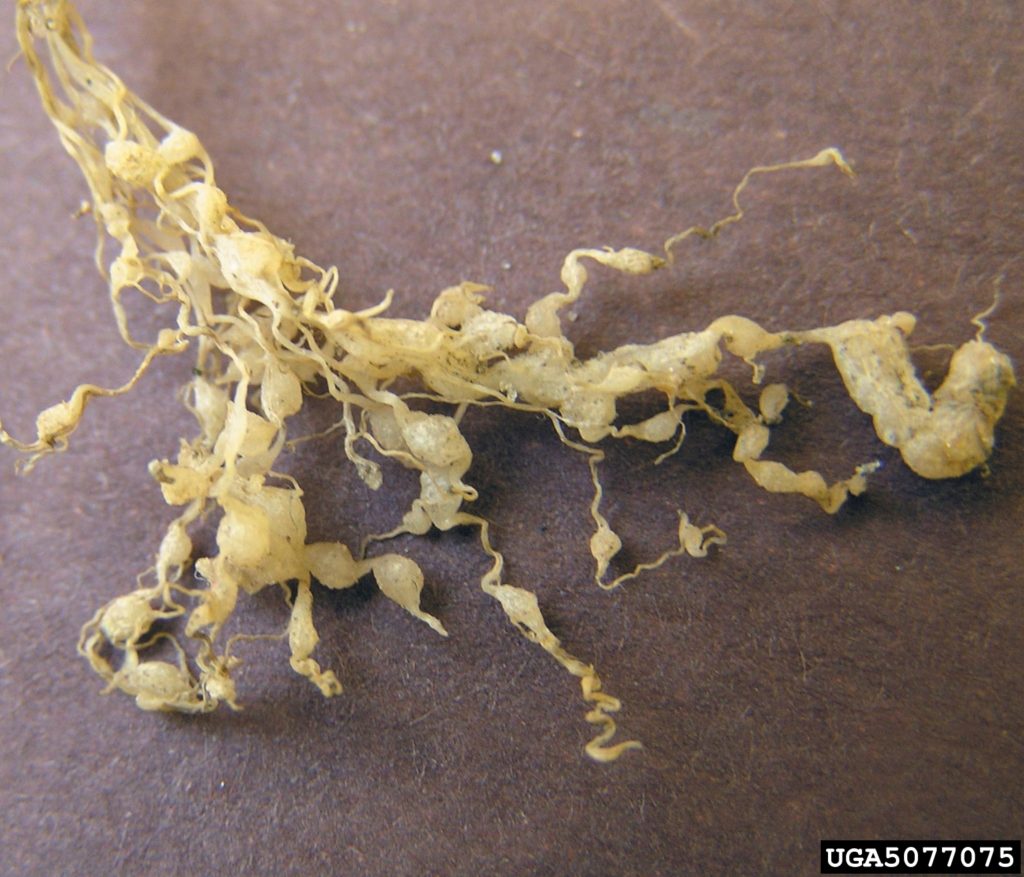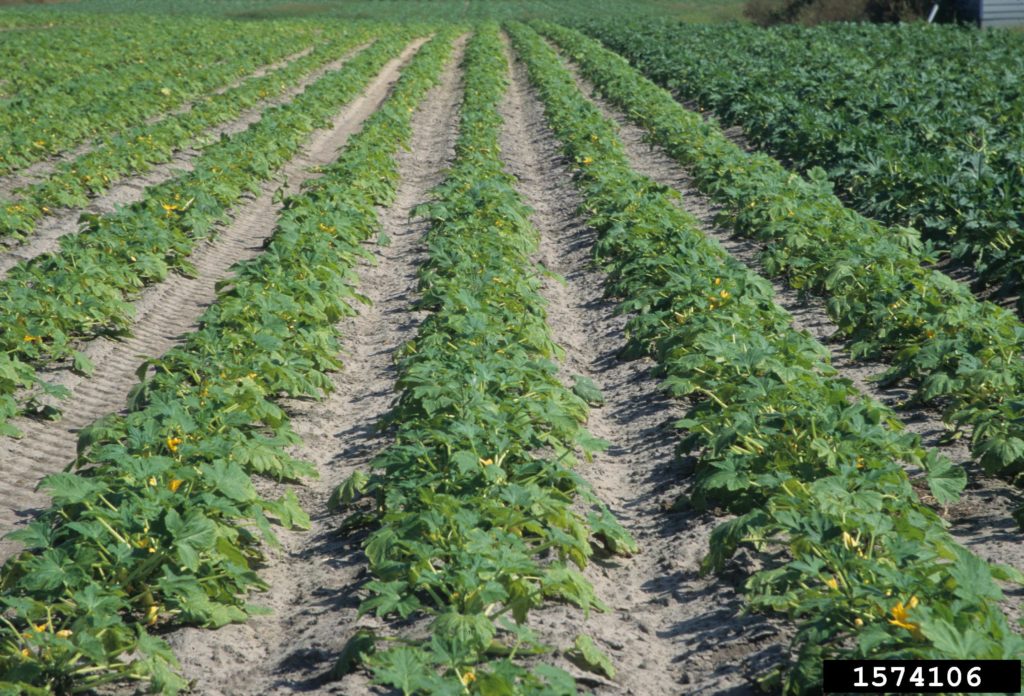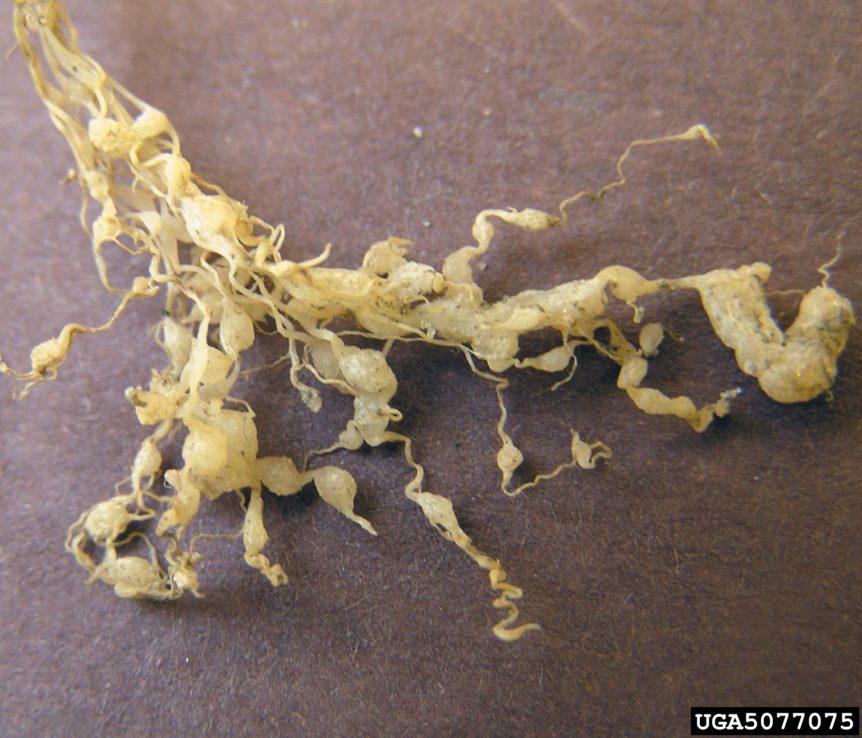
Photo by David Langston
By Frank Giles
Nematodes can be a hidden yield robber. The soilborne pests can pack a pretty powerful punch despite their puny size. Nematodes have been problematic in Southeast vegetable crops for many years. Their management was complicated by the phaseout of methyl bromide.
In 2018, the University of Georgia surveyed fields in 30 Georgia counties to measure the pest. The counties where the survey was conducted represent about 85% to 90% of the state’s vegetable production. Nematologist Abolfazl Hajihassani led the research. Since the survey was conducted, Hajihassani has moved on to work at the University of Florida Institute of Food and Agricultural Sciences (UF/IFAS).

Root-Knot: No. 1 Nemesis
The Georgia study turned up 10 genera of nematodes. Root-knot nematode was identified as the most problematic and widespread in the vegetable production areas. The research found that root-knot nematodes were present in 60% of the vegetable fields surveyed.
The tiny parasitic worms enter the plant’s root, grow and produce eggs. Within a few weeks, this causes the roots to swell and display the telltale symptom of root galling. The galls inhibit plant growth and reduce yields. Sandy soils, which are common in the Southeast, allow nematodes to reproduce more frequently because they can move more easily through the soil’s loose texture.
In addition to root-knot nematode, the survey identified stubby root, ring, spiral, root lesion, reniform, lance, cyst, stunt and dagger nematodes. All those pests are munching away at yields. Research suggests that nematodes cause an 11% yield drop in 24 commercially important vegetable crops and result in crop losses of $6 to $8 billion annually in the United States.
Since methyl bromide was phased out, growers and researchers have been learning new, effective ways to manage nematodes. Chemical measures remain critically important and include fumigants and other nematicides.
Research Results
Recently, Johan Desaeger, a UF/IFAS nematologist, has completed and published results of new research on nematode management. He conducted the research with Hung Xuan Bui, a UF/IFAS biological scientist. They compared the effectiveness of different nematicides through drip-tape irrigation.
“Nematicides are typically applied through the drip in plasticulture. However, the water solubility of nematicides varies and this will determine how these products move in the bed,” Desaeger says. “Also, especially in our sandy soils, lateral water movement from the drip tape is limited, and this can limit nematicide movement and efficacy following drip applications. The purpose of this research was to investigate if having two instead of one drip tape would improve nematicide efficacy and crop yield.”
In the study, three new non-fumigant nematicides (fluazaindolizine, fluensulfone and fluopyram) and two old nematicides (oxamyl and metam potassium) were evaluated when applied via single and double drip tapes to control root-knot nematode in cucumber and squash. The study took place in Florida between February 2020 and December 2022.
Nematicides with less water solubility, like fluopyram, showed the most benefit. Some benefit was noted for metam potassium, but no or limited benefit was noted for oxamyl, fluazaindolizine and fluensulfone.
Nematicide applications via double drip tapes resulted in lower root gall infection (and tended to have higher yield) as compared to a single tape for fluopyram, but no difference was noted between single and double tapes for oxamyl and fluazaindolizine. Fluensulfone response was somewhere in between, and metam potassium had higher squash yield when applied with double tapes. Root-knot infection was higher in cucumber than in squash, and metam potassium had the highest yields and lowest nematode infection compared to other nematicide treatments.
Integrated Pest Management
Desaeger says growers can’t rely on just one management method when it comes to nematodes. Chemical control alone is insufficient.
“A solid integrated approach to nematode management is something every grower should aspire to achieve,” he says. “The more different components that can be implemented, the more effective and more sustainable nematode management will be.
“Fumigants and nematicides are valuable components but should not be the sole practice. Whenever possible, good crop rotation (including cover crops) should be the foundation of management. Another tool is the use of resistant (and/or tolerant) cultivars, which is the most effective way to manage nematodes. Unfortunately, they are not available for many vegetables, except tomatoes.”
Desaeger adds other tools include soil management, especially increasing organic matter. That’s where cover crops can provide a benefit. In addition, certain cover crops have the ability to remove nematodes from the soil. Keeping equipment clean to avoid spreading nematodes from field to field is also important.
Scouting for the pest is essential, and timing is critical.
“Growers mostly rely on soil samples to monitor for nematodes, which are notoriously variable, especially when collected before planting,” Desaeger says. “They can be deceptively low before planting. Root knot is the most important nematode for vegetable growers, and the best way to monitor for them is to simply dig up roots and look for the presence of root galls. This should be done especially when plants seem to be under stress, showing symptoms of yellowing, wilting, stunting and such.
“There is no single approach. Every farm will have to develop a program that works best in their environment.”










